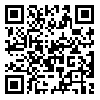Volume 26, Issue 4 (2023)
mjms 2023, 26(4): 77-85 |
Back to browse issues page
Ethics code: (IR.ACECR.ROYAN.REC.1397.104), (approval ID: EC/92/1009)
Download citation:
BibTeX | RIS | EndNote | Medlars | ProCite | Reference Manager | RefWorks
Send citation to:



BibTeX | RIS | EndNote | Medlars | ProCite | Reference Manager | RefWorks
Send citation to:
Jaberi R, Jabbari R, Nemati S, Hajinasrollah M, Mirsadeghi S, Mohitmafi S, et al . Induced pluripotent stem cell- derived Neuronal Precursors Ameliorate Sensory and Motor Ability in Non-Human Primates Suffering Spinal Cord Injury. mjms 2023; 26 (4) :77-85
URL: http://mjms.modares.ac.ir/article-30-77630-en.html
URL: http://mjms.modares.ac.ir/article-30-77630-en.html
Razieh Jaberi1  , Reza Jabbari2
, Reza Jabbari2  , Shiva Nemati3
, Shiva Nemati3  , Mostafa Hajinasrollah4
, Mostafa Hajinasrollah4  , Sara Mirsadeghi1
, Sara Mirsadeghi1  , Soroush Mohitmafi5
, Soroush Mohitmafi5  , Behrouz Rafiei6
, Behrouz Rafiei6  , Hossein Ghanaati6
, Hossein Ghanaati6  , Sahar Kiani
, Sahar Kiani  7
7
 , Reza Jabbari2
, Reza Jabbari2  , Shiva Nemati3
, Shiva Nemati3  , Mostafa Hajinasrollah4
, Mostafa Hajinasrollah4  , Sara Mirsadeghi1
, Sara Mirsadeghi1  , Soroush Mohitmafi5
, Soroush Mohitmafi5  , Behrouz Rafiei6
, Behrouz Rafiei6  , Hossein Ghanaati6
, Hossein Ghanaati6  , Sahar Kiani
, Sahar Kiani  7
7
1- Department of Stem Cell and Developmental Biology, Cell Science Research Center, ROYAN Institute for Stem Cell Biology and Technology, ACECR, Tehran, Iran.Department of Brain and Cognitive Sciences, Cell Science Research Center, ROYAN Institute for Stem Cell Biology and Technology, ACECR, Tehran, Iran
2- Department of Neurosurgical Science, Loghman Hakim Medical Center, Shahid Behshti University of Medial Sciences, Tehran, Iran.
3- Department of Stem Cell and Developmental Biology, Cell Science Research Center, ROYAN Institute for Stem Cell Biology and Technology, ACECR, Tehran, Iran.Department of Brain and Cognitive Sciences, Cell Science Research Center, ROYAN Institute for Stem Cell Biology and Technology, ACECR, Tehran, Iran.
4- Animal Care Facility, Reproductive Biomedicine Research Center, ROYAN Institute for Biotechnology, ACECR, Tehran, Iran,
5- Department of Veterinary Medicine, Karaj branch, Islamic Azad University, Karaj, Iran
6- Advanced Diagnostic and Interventional Radiology Research Center (ADIR), Tehran University of Medical Sciences, Tehran, Iran
7- Department of Stem Cell and Developmental Biology, Cell Science Research Center, ROYAN Institute for Stem Cell Biology and Technology, ACECR, Tehran, Iran.Department of Brain and Cognitive Sciences, Cell Science Research Center, ROYAN Institute for Stem Cell Biology and Technology, ACECR, Tehran, Iran.Center for Cognitive Science, Institute for Convergence Science & Technology, Sharif University of Technology, Tehran 14588-89694, Iran. ,skiani2536@gmail.com
2- Department of Neurosurgical Science, Loghman Hakim Medical Center, Shahid Behshti University of Medial Sciences, Tehran, Iran.
3- Department of Stem Cell and Developmental Biology, Cell Science Research Center, ROYAN Institute for Stem Cell Biology and Technology, ACECR, Tehran, Iran.Department of Brain and Cognitive Sciences, Cell Science Research Center, ROYAN Institute for Stem Cell Biology and Technology, ACECR, Tehran, Iran.
4- Animal Care Facility, Reproductive Biomedicine Research Center, ROYAN Institute for Biotechnology, ACECR, Tehran, Iran,
5- Department of Veterinary Medicine, Karaj branch, Islamic Azad University, Karaj, Iran
6- Advanced Diagnostic and Interventional Radiology Research Center (ADIR), Tehran University of Medical Sciences, Tehran, Iran
7- Department of Stem Cell and Developmental Biology, Cell Science Research Center, ROYAN Institute for Stem Cell Biology and Technology, ACECR, Tehran, Iran.Department of Brain and Cognitive Sciences, Cell Science Research Center, ROYAN Institute for Stem Cell Biology and Technology, ACECR, Tehran, Iran.Center for Cognitive Science, Institute for Convergence Science & Technology, Sharif University of Technology, Tehran 14588-89694, Iran. ,
Abstract: (608 Views)
Background: The sensory and mobility failure associated with spinal cord injury (SCI) is desperately complicated due to the pathological events that occur sequentially in consequent to the injury.
Objectives: Herein, we applied neural stem cells, derived from human iPSCs (hiPSC-NSCs), to ameliorate the behavioral complications of contusive SCI in Rhesus monkeys, in sub-acute phase.
Methods: hiPSC-NSCs were maintained and characterized in vitro for general NSCs as well as hind-limb specific gene and protein expression prior to transplantation. Moreover, Masson's trichrome staining (MTS) in addition to luxol fast blue (LFB) were performed to determine the fibrotic scar reduction and myelination respectively. Tarlov’s scale were utilized to score the motor improvement, plus, sensory perception evaluation throughout six months following the injury.
Results: hiPSC-NSCs were identified to own NSCs’ exclusive properties in vitro by SOX2, DCX and NESTIN in addition to NESTIN , PAX6 , SOX1 , HOXA2 and HOXB2 protein and gene expression. Additionally, hiPSC-NSCs caused remarkable depletion in fibrotic scar and enhance myelination; spinal shock, sensory responses, reflexes and motor function were improved over six months.
Conclusions: Our findings suggest that hiPSC-NSCs lead to promising recovery after SCI, therefore, this source of NSCs provide a therapeutic potential in clinical studies.
Objectives: Herein, we applied neural stem cells, derived from human iPSCs (hiPSC-NSCs), to ameliorate the behavioral complications of contusive SCI in Rhesus monkeys, in sub-acute phase.
Methods: hiPSC-NSCs were maintained and characterized in vitro for general NSCs as well as hind-limb specific gene and protein expression prior to transplantation. Moreover, Masson's trichrome staining (MTS) in addition to luxol fast blue (LFB) were performed to determine the fibrotic scar reduction and myelination respectively. Tarlov’s scale were utilized to score the motor improvement, plus, sensory perception evaluation throughout six months following the injury.
Results: hiPSC-NSCs were identified to own NSCs’ exclusive properties in vitro by SOX2, DCX and NESTIN in addition to NESTIN , PAX6 , SOX1 , HOXA2 and HOXB2 protein and gene expression. Additionally, hiPSC-NSCs caused remarkable depletion in fibrotic scar and enhance myelination; spinal shock, sensory responses, reflexes and motor function were improved over six months.
Conclusions: Our findings suggest that hiPSC-NSCs lead to promising recovery after SCI, therefore, this source of NSCs provide a therapeutic potential in clinical studies.
Keywords: hiPSC-NSCs, spinal cord injury, Sub-acute phase, Rhesus monkey, Sensory perception, Motor activity
Send email to the article author
| Rights and permissions | |
 |
This work is licensed under a Creative Commons Attribution-NonCommercial 4.0 International License. |





